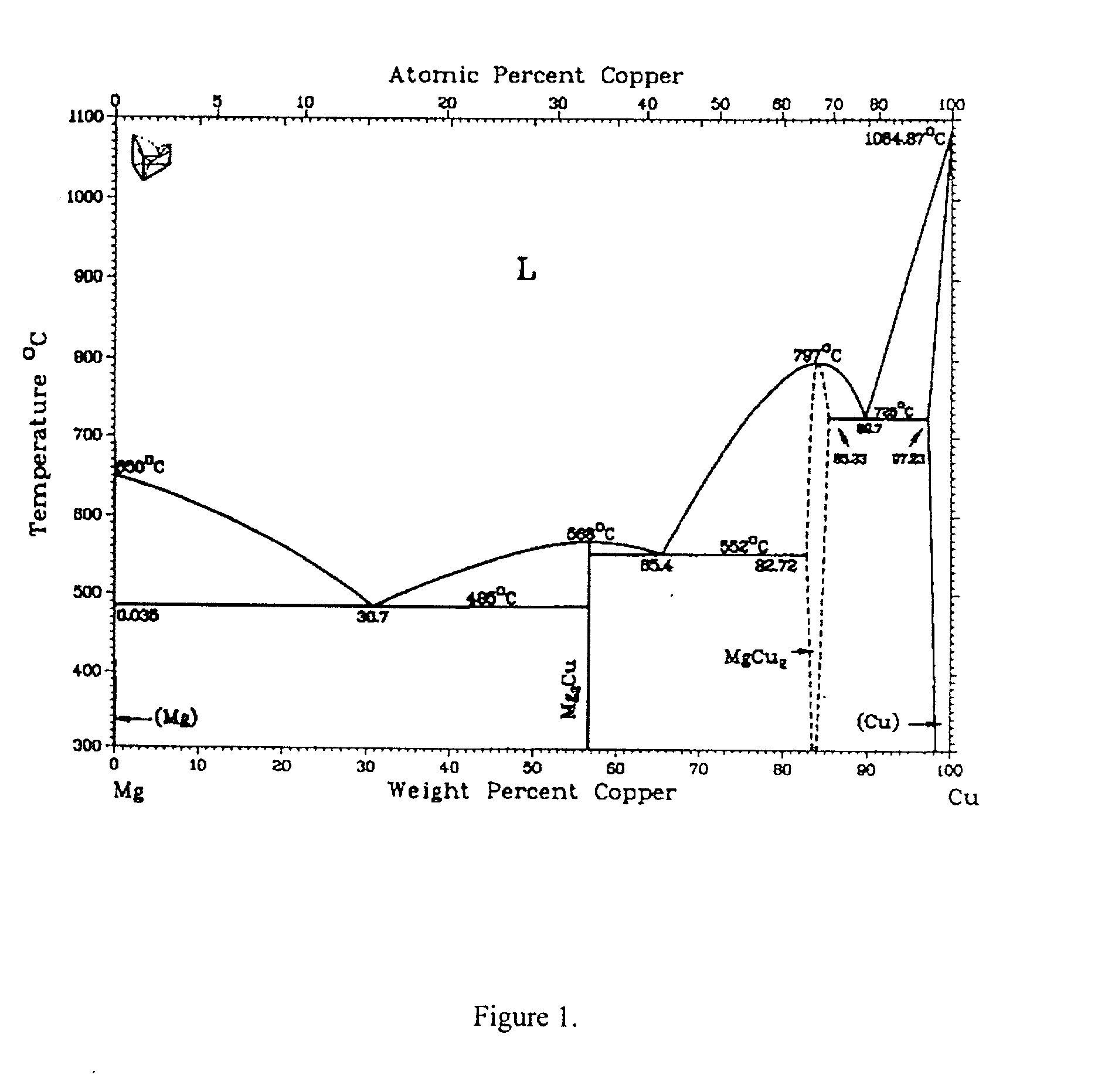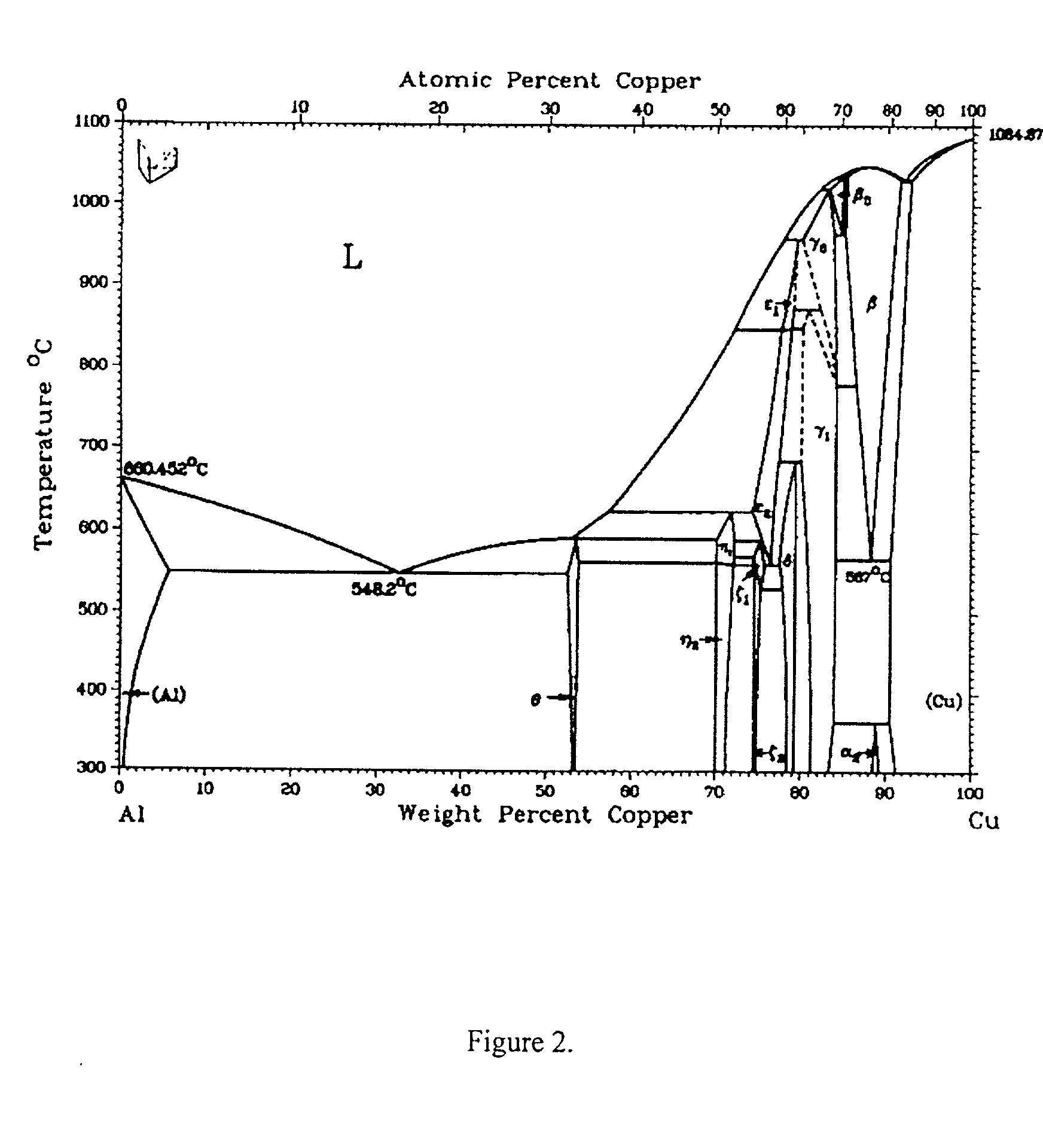Metal laminate structure and method for making
- Summary
- Abstract
- Description
- Claims
- Application Information
AI Technical Summary
Benefits of technology
Problems solved by technology
Method used
Image
Examples
Embodiment Construction
[0038] Two strips of 0.005" thick 301 stainless steel (SS) were plated on one side with a layer of copper using an electrolytic process. On both strips, the thickness of the copper plating was 5 microns. The strips were then sectioned to have a length and a width of 3" and 2", respectively. A 0.010" thick sheet of Mg dimensioned to have the same length and width as the strips was interposed between the copper-plated surface of the two strips and the structure placed in a vacuum hot press. Stainless steel platens measuring 3.75" in diameter were placed on both sides of the structure to ensure a uniform application of pressure to the metal strips. The chamber was then evacuated to a pressure of 50 microns of Hg and backfilled with gettered Argon to a pressure of 10" Hg. The process was then repeated to ensure that a majority of the oxygen was removed from the hot-press chamber.
[0039] The unconsolidated structure was heated to a temperature of 200.degree. C. for 0.5 hours to allow any ...
PUM
| Property | Measurement | Unit |
|---|---|---|
| Fraction | aaaaa | aaaaa |
| Frequency | aaaaa | aaaaa |
| Frequency | aaaaa | aaaaa |
Abstract
Description
Claims
Application Information
 Login to View More
Login to View More - R&D
- Intellectual Property
- Life Sciences
- Materials
- Tech Scout
- Unparalleled Data Quality
- Higher Quality Content
- 60% Fewer Hallucinations
Browse by: Latest US Patents, China's latest patents, Technical Efficacy Thesaurus, Application Domain, Technology Topic, Popular Technical Reports.
© 2025 PatSnap. All rights reserved.Legal|Privacy policy|Modern Slavery Act Transparency Statement|Sitemap|About US| Contact US: help@patsnap.com



